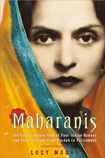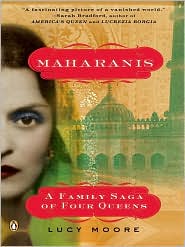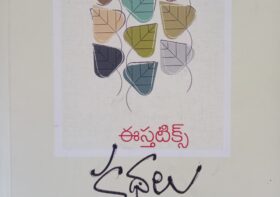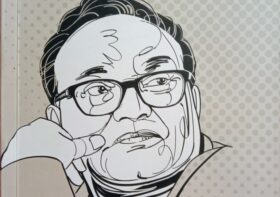Maharanis — Lucy Moore

One of my areas of interest is the transition in Indian society during the second half of 18th century and the first half of the 20th century. A feudal, rural, agrarian, tradition bound society rather quickly morphed into a vastly different country within that 100 year period. Naturally, this interest of mine extends to the Native States in India as well as the British Raj.
In this book, Lucy Moore tells the stories of four Maharanis, queens of princely states in British India. But, their story cannot really be told without telling the stories of British India, the princely states, the independence movement, the post independence relationships with the Government of India and the movement towards emancipation of women in India.
The four Maharanis whose stories are told here are (in reverse order) Gayathri Devi aka Ayesha, the Maharani of Jaipur, her mother, Maharani Indira Raje of Cooch Behar, her maternal grand mother Maharani Chimnabai II of Baroda, and her paternal grandmother Maharani Sunity Devi, who preceded Indira Devi as Maharani of Cooch Behar.
In 1857, Queen Victoria took over the possession of India after the first Indian Independence struggle (or the Sepoy Mutiny – depending on one’s perspective). A major portion of India was under the direct rule of the British government headed by a viceroy, the representative of the queen. However, a substantial portion of the country was under the control of ‘independent rulers’ who ruled their ‘Native States’ under special agreements with the British government. These independent rulers were divided into separate classes based on the size and wealth of kingdoms. There were 118 salute states ruled by Maharajas, 117 non-salute states ruled by Thakurs (or Jamindars). Salutes for the top 118 states ranged from a 9 gun salute to a 21 gun salute. The viceroy was entitled to a 31 gun salute.
The relationship between the rulers of these princely states and the British government was not an easy one. The rulers of the larger kingdoms did not really cherish being under the thumb of the viceroy and being the vassals of the King of England. However, they also had to publicly display their loyalty to the King and could not openly defy the diktats of the viceroys. The viceroys did not have much respect for the princes, whom they disdained for their vagrant behaviors.
Baroda was the third most important of the Native States (Hyderabad and Mysore ranked higher); the Maharaja of Baroda was entitled to a 21 gun salute. In late 18th and early 19th century, Baroda was ruled by Maharaja Sayajirao Gaekwad. Sayajirao was not born into a princely family. He was born in a Maratha peasant family. As Jijibai, the regent of Maratha, did not have any children, she adopted Sayajirao after a search of the Maratha families in the kingdom. Sayajirao was an ‘enlightened’ prince. He was determined to rule his kingdom in a manner that benefitted the people and gave the lie to the ‘white man’s burden’ that only the white people could provide the proper governance to the inferior natives. He treaded dangerously as some of his actions were perceived as bordering on insubordination or insulting to the British monarch and his viceory. Gopala Krishna Gokhale was a close associate of Sayajirao. He was seen as sheltering militants from British India trying to overthrow the British raj. Aurobindo Ghosh, the militant nationalist who later became a mystic, was in his employ for several years.
Sayajirao was a teetotaler and famously monogamous, a rarity among the princes. He was married to Chimnabai. Chimnabai (born Garabai Ghatge, adopted the name of her predecessor after marriage), while living in traditional purdah, learned English and led a movement towards improving the status of Indian women.
After careful and protracted diplomatic negotiations, it was arranged that Sayajirao’s daughter Indira Raje, at age 16, was to be married to Madhav Rao Scindia of Gwalior, a fellow Maratha King, ruler of one of the five largest kingdoms. An engagement ceremony was held. Meanwhile, a large durbar was held in New Delhi, in a specially constructed tent city to celebrate the coronation of King George. During these celebrations, Princess Indira spent much of her time with her schoolmates, Princess Pretty (Prativa) and Baby (Sudhira) of Cooch Behar and their brother Jit (Jitendra Narayan). She fell in love with Jit and, much to the displeasure of her parents, broke off her engagement 16 days before the scheduled marriage. Her parents refused to consent to her marriage with Jit. Indira, however, continued her relationship with Jit, and arranged for him to be in the vicinity when she went with her family on an offcial holiday in England. Eventually, her parents reluctantly gave their consent, but not their approval. They did not attend the marriage and did not maintain any contact with Indira for several decades.
Jit was the second son of Nripendra Narayan and Sunitidevi, Maharaja and Maharani of Cooch Behar, a small kingdom in Northeastern India, known for its wildlife and hunting expeditions. Sunity Devi was the daughter of Keshub Chander Sen, a leading reformer of Bengal and an adherent of Brahmo Samaj. Thanks to the progressive views of her father, Sunity Devi, who grew up in Calcutta, was educated in English. The British Resident thought that it would be good for the Maharaja of Cooch Behar to have an educated and progressive bride, an idea that Nripendra Narayan agreed with. Sunityand Nripendra Narayan spent considerable amount of their time in Calcutta and England and educated their children in England.
Jit, after the deaths of his father and older brother, succeeded to the throne of Cooch Behar. He too died early and his wife Indira Raje became the dowager Maharani of Cooch Behar. Indira Raje, renowned for her beauty, was quite a charming and colorful woman, and was well known among the soceity glitterati of India, Europe and America.
Her third daughter Ayesha fell in love with the handsome Jai aka Sawai Man Singh II, the Maharaja of Jaipur. The problem was that Jai, at a quite young age, was already married twice – for diplomatic and traditional reasons. He wanted to marry for love and was in love with Ayesha, sister of his friends, princes Bhaiya (Jagaddipendra) and Indrajit of Cooch Behar. Indira Raje held her consent for several years, but eventually agreed to the marriage. Thus Ayesha became the Third Her Highness Maharani of Jaipur. The handsome Jai was quite an adventurer, a great Polo player, and an aviation enthusiast. The polo playing debonair Jai and the beautiful Ayesha made quite a pair and traveled in elite social circles all over the world. They were friends with, among others, the Kennedys. Jacquelyn Kennedy on an officital trip to India made a special stop at Jaipur against the advice of the diplomatic corps as the Jaipurs were against the ruling Congress party. Vogue, in 9165 described Maharani Gayathri Devi (Ayesha) was regarded as one of the ten most beautiful women in the world.
The life of the Maharanis and the princesses was one of sharp contrasts. In their native states, they had to observe strict purdah and live in a zenana in a very traditional manner. However, when they were outside of their native states, they had significant freedom and were able to move more socially. The princesses, who were often educated in European schools clearly preferred to be in Europe where they were not constrained by the jenana and purdah systems. Ayesha, who grew up with relative freedom and modernity in Cooch Behar and England, was confined in the early days after marriage to the zenana in the very tradional Jaipur under the purdah system.
Chimnabai, her daughter and grand daughter slowly and deliberately ended the purdah system and participated in public functions alongside their husbands and often without them. Chimnabai, who was befriended by Sarojini Naidu, chaired the Women’s Indian Association and authored a book, The Position of Women in Indian Life. She was a staunch advocate of education of women.
At the time of Independence, the rulers of all but three of the Native States voluntarily surrendered their kingdoms and their hereditary rights for the broader benefit of the nation. The Indian government gradually went back on the promises made at the time of accession, with the final blow being dealt in 1971 by Indira Gandhi when she passed a constitutional amendment ending all the prvileges they were previously entitled to.
After independence, Ayesha took a very active part in public life, joining and vigorously campaigning for the Swatantra Party and being elected to Lok Sabha with the biggest plurality of the time. She was jailed by Indira Gandhi’s regime during the emergency (one of her jailmates was another Maharani Vijaya Raje Sindhia of Gwalior).
A tragedy in this book is that almost all the principal male characters in this book (the Maharajas and princes of Baroda, Cooch Behar and Jaipur), with the exception of Sayajirao, suffered from alchoholism and died early deaths (Jai died from an accident suffered while playing polo). Most of them were philanderers as well. It was considered natural for them to have trysts with other women despite being married to beautiful and strong willed women. Also, most of the male progeny of the princes – other than those that were in line to ascend to the throne – really had nothing much to look forward to. Scholarship was usually not their forte. Their lives of luxury did not allow them to train for any useful skills.
This book opens with the Grand Coronation Durbar held for King George in November 1911 in a specially erected tent city in Delhi (the capital was still Calcutta and New Delhi wasn’t yet built) with all the rulers of the Native States participating with all their splendor on display. The book ends with Rajamata Gayatri Devi (who has already lost her only child as well as the raj) actively participating in the civic affairs of Jaipur. In this span of 65 years, the the world of her grandparents was completely transformed.
Lucy Moore seems to have assiduously researched the history of these kingdoms as well as the history of British India. The book is written in a very lucid and dramatic style, quotes frequently from official documents from British archives and provides plentry of references. She paints a great picture of the life in a Native State, the tense relationships between the viceroy and the Maharjas, the ambivalence of Maharajas to British rule and the independence movement, the gradual changes that occurred over the period of the narrative and the post-independence decline in the fortunes of the princes. Her sympathies appear to be with the Maharajas and she does not seem to have much love lost for Indira Gandhi. She paints a very heroic picture of Jai and Ayesha’s service to the people of Jaipur after independence.
The book is written in a very lucid and dramatic style, quotes frequently from official documents from British archives and provides plentry of references. She paints a great picture of the life in a Native State, the tense relationships between the viceroy and the Maharjas, the ambivalence of Maharajas to British rule and the independence movement, the gradual changes that occurred over the period of the narrative and the post-independence decline in the fortunes of the princes. Her sympathies appear to be with the Maharajas and she does not seem to have much love lost for Indira Gandhi. She paints a very heroic picture of Jai and Ayesha’s service to the people of Jaipur after independence.
There are quite a few anecdotes and tales in this book as well as many little pieces of interesting information about those times. For example, both Sayajirao Gaekwad and Jai were not born in royal households, but were plucked from ordinary families to be adopted and anointed as princes as there were no male heirs to their kingdoms at that time. They both went on to be progressive rulers of their States. Another interesting tidbit was that Indrajit Narayan of Cooch Behar, brother of Ayesha, married Kamala Devi of Pithapuram.
The book provides a glossary, a list of references and a thorough index.
I found this book to be a compelling read.
**********
Maharanis
The extraordinary tale of four Indian Queens and their journey from Purdah to Parliament
Lucy Moore
Viking 2005
349 pages




Nageswara Mutnuri
Wish Lucy Moore had writtem about Travancore too, which was quite an exception among all the princely states. Scholarship was indeed the forte of many a ruler there. They were not philanderers. They were progressive rulers, and made Tranvancore stood up with so many firsts to their credit(first to abolish capital punishment, first to achieve near complete literacy, first in women’s rights etc etc). They lead very simple lives too.